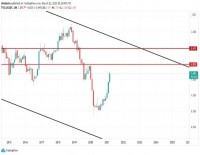|
Opalesque Industry Update - As a result of the volatility and positioning for generational inflation and increased likelihood of an economic recession, institutional investors withdrew an estimated $26.0 billion from hedge funds in 3Q 2022, as reported today by HFR®, the established global leader in the indexation, analysis and research of the global hedge fund industry, in the latest release of the HFR Global Hedge Fund Industry Report. Total global hedge fund industry capital fell to $3.78 trillion in 3Q, as managers navigated extreme volatility with leadership from uncorrelated Macro strategies, including Fundamental Commodity and Discretionary funds, as well as Quantitative, trend-following CTA strategies which posted record gains through 3Q as financial market volatility associated with generational inflation, sharply increasing interest rates, increased likelihood of a global recession, and geopolitical risks spiked to record levels. The HFRI 500 Macro Index surged +17.2 percent YTD through 3Q, topping the decline of US equities by nearly 5000 bps, the highest outperformance since index inception. Negatively correlated Macro gains offset weakness in directional and higher beta strategies, bringing the YTD return of the HFRI 500 Fund Weighted Composite Index to -4.5 percent through 3Q, with both Macro and the overall Composite indices exhibiting the highest outperformance versus equity market declines in the first three quarters of a year since inception. Larger, more established hedge funds outperformed smaller hedge funds in both September and YTD, with the HFRI Asset Weighted Composite Index (comprised of the same constituents as the equal-weighted version) advancing +0.5 percent in September to increase its YTD return to +3.3 percent. The investable HFRI 500 Fund Weighted Composite Index declined -1.9 percent in September, as gains in Macro, Currency, and CTA strategies were offset by declines in directional and higher beta strategies, lowering YTD performance to -4.5 percent; the HFRI Fund Weighted Composite Index® (FWC) has declined -6.67 percent YTD 2022. Strategy asset increases were again led by Macro strategies, which grew by $8.0 billion in 3Q22 on strong performance-based gains, ending the quarter at an estimated $711 billion. Macro sub-strategy asset growth was led by Fundamental, Discretionary strategies, which increased by $2.7 billion, while quantitative, trend-following CTA strategies increased by $2.2 billion. The investable HFRI 500 Macro Index surged +17.2 percent YTD through 3Q, with contributions from the HFRI 500 FOF: Risk Mitigation (S) Index, which gained +9.2 percent, the HFRI 500 Macro: Systematic Diversified Index, which soared +22.5 percent, and the HFRI 500 Macro: Commodity Index, which vaulted a record +43.9 percent YTD, leading all strategies and sub-strategies. With interest rates rising sharply in 2022 and expectations for continued increases, capital managed by credit- and interest rate-sensitive fixed income-based Relative Value Arbitrage (RVA) strategies increased by $6.1 billion in 3Q22, ending the quarter with $1.03 trillion. RVA managers again navigated not only sharp increases in interest rates but also a yield curve inversion, the highest inflation in 50 years, a sharp increase in geopolitical risk, and expectations for additional rate increases in 2022. RVA: Multi-Strategy funds led inflows ($3.5 billion) and performance-based asset increases for the quarter, driving the sub-strategy capital to $627.6 billion. The investable HFRI 500 Relative Value Index posted a narrow decline of -0.7 percent YTD through September, with losses in directional strategies offset by gains in the HFRI 500 RV: Volatility Index, which surged +14.2 percent, and the HFRI 500 RV: Multi-Strategy Index, which added +2.7 percent over the first nine months of the year. Event-Driven (ED) strategies, which categorically focus on out of favor, often heavily shorted, deep value equity and credit positions, experienced a nominal outflow of only $583 million in 3Q, which combined with a performance-based decline resulted ED asset declining by $9.9 billion over the quarter, reducing total ED capital to $1.0 trillion. ED sub-strategy asset declines were almost entirely concentrated in higher beta ED: Special Situations, which fell $9.2 billion in the quarter on investor redemptions and performance-based losses. Capital increases of $4.1 billion in low volatility ED: Credit Arbitrage strategies partially offset overall ED losses. The investable HFRI 500 Event-Driven Index declined -8.8 percent YTD through September 2022, while the HFRI Event-Driven (Total) Index fell -8.0 percent. Total capital invested in Equity Hedge (EH) strategies declined in 3Q, as performance-based losses, combined with an estimated net asset outflow of $12.4 billion, decreased total EH capital to $1.04 trillion. EH sub-strategy outflows were led by Equity Market Neutral and Fundamental Growth, which experienced outflows of $3.5 and $3.2 billion, respectively. The investable HFRI 500 Equity Hedge Index has fallen -15.6 percent YTD through September, with declines led by the HFRI 500 EH: Fundamental Growth Index, which lost -23.2 percent, and the HFRI 500 EH: Healthcare Index, which fell -18.6 percent; the HFRI Equity Hedge (Total) Index also declined -14.1 percent over the first nine months of 2022. EH losses were partially offset by gains in the HFRI 500 EH: Energy/Basic Materials Index, which surged +13.1 percent YTD 2022. The industry's largest firms, those managing greater than $5 billion, led investor outflows in 3Q, with these experiencing an estimated net asset outflow of $18.9 billion for the quarter. Firms managing between $1 billion and $5 billion saw an estimated net outflow of $5.3 billion, while investors redeemed nearly $1.8 billion from firms managing less than $1 billion over the quarter. "Diversifying strategies such as Macro, CTA and Relative Value Arbitrage have demonstrated the robustness and effectiveness of their strategies to institutional investors throughout 2022, effectively navigating extreme volatility, generational inflation, sharp interest rate increases, a historic breakdown in correlations, an increased likelihood of a recession, and a sharp increase in geopolitical risk. Once again, Macro and Relative Value Arbitrage hedge funds drove historic defensive capital preservation and the largest opportunistic equity and fixed income outperformance since inception of the HFR Indices," stated Kenneth J. Heinz, President of HFR. "Uncertainty regarding all of these macroeconomic and geopolitical drivers has continued to accelerate into 4Q with expectations for extreme volatility and the potential for dislocations extending through year end. Managers remain positioned for the fluid and dynamic market cycles, continuing to execute on their strategies, operate as liquidity providers, preserve capital, and identify and monetize opportunities created by the volatility. Strategies which have demonstrated their ability to navigate the current extreme market volatility are likely to attract capital from leading global financial institutions looking to stabilize their portfolios from losses in long equity and fixed income exposures, and to drive industry capital growth into 2023."
Press release Article source - Opalesque is not responsible for the content of external internet sites |
Industry Updates
Investors withdrew an estimated $26bn from hedge funds in 3Q 2022
Thursday, October 20, 2022
|
|





 RSS
RSS





